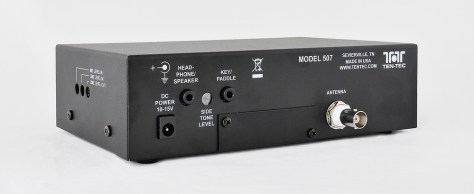
Many thanks to Pete Eaton (WB9FLW) who writes:
QRP Labs has just announced the QSX an All-Band All-Mode Transceiver Kit that should be available later this year. The Target price for the 10 Band Model is $150, also available will be a 40 Meter version for $75.00.
Details from QRP Labs:
QSX (QRP Labs SSB Xcvr) is a 40m SSB transceiver with 10-band (160m-10m) and enclosure options. The kit inherits all the functionality of the famous QCX single-band CW transceiver kit but adds SSB, AM, FM, PSK31 and RTTY. This will be the lowest cost all-HF radio available but also high performance and packed with features. These are the planned features of QSX:
- Software Defined Radio (SDR) technology with standalone Digital Signal Processing (DSP), no PC required
- Very high performance 24-bit Analog to Digital Converter (ADC) and 24-bit Digital to Analog Converter (DAC)
- 40m (single band) or 160-10m (10-band, including 60m) versions available
- Modes: SSB, CW, AM, FM, PSK31, RTTY, WSPR beacon
- Power output: 10W from 13.8V supply (power output is adjustable by the firmware)
- Single power supply needed, 12V to 14V
- USB host interface and connector, for USB keyboard to allow PC-less operation on PSK31 and RTTY
- USB device interface and connector, for PC CAT Control
- QSX can appear to a PC as a high performance 24-bit USB sound card and radio – for digital modes from a PC e.g. FT8, either demodulated or as I-Q for PC SDR programs
- Built-in CW IAMBIC keyer (or straight keying also possible) with raised-cosine key-envelope shaping
- DSP features (selectable sharp filters, AGC, Speech Compression, Noise Reduction etc.)
- Dual microphone inputs (mobile phone headset with VOX, or RJ45 connector for Kenwood/Yaesu mics)
- Dual VFO (A/B/Split), frequency and message memories
- Through-hole assembly only
- Built-in test equipment features for alignment, debugging and general purpose use
- Detailed assembly manual
- Macro facility for user defined sequences of operations, or redefinition of controls
- Front panel: 16 x 2 LCD (yellow/green backlight), 2 rotary encoders, 4 buttons, mic/earphones socket
- Soft-power on/off switch, the radio saves its state automatically on switch off, so that it starts up in the same state next time
- Free firmware updates for life, very simple firmware update procedure via a USB memory stic
QSX is still in development! The above list is subject to change. The following is a FAQ with information about QSX.
More Info on QRP Labs Web Page:
https://www.qrp-labs.com/qsx.html
Check out the following video from YOTA 2018:
Click here to view on YouTube.
Fantastic! Many thanks for sharing this, Pete! This looks like a brilliant little kit for any skill level of patient kit builder.
































